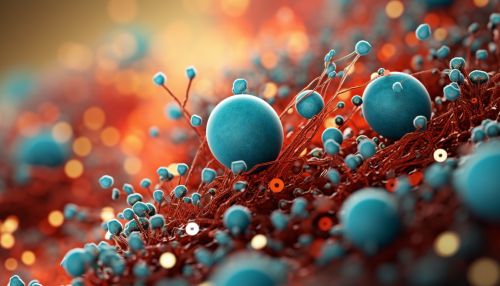Nanoparticle Drug Delivery Systems
Introduction
Nanoparticle drug delivery systems (NDDS) are a subset of nanomedicine that utilize nanoparticles for the purpose of delivering drugs to specific types of cells or tissues in the body. The field has gained significant attention due to its potential to improve the therapeutic index of drugs while reducing their side effects.


Nanoparticles in Drug Delivery
Nanoparticles used in drug delivery systems are typically in the size range of 10-1000 nanometers. These particles can be made from a variety of materials, including liposomes, polymers, and dendrimers. The choice of material depends on the specific requirements of the drug delivery system, such as the desired release rate, the target site, and the type of drug to be delivered.
Mechanism of Action
The mechanism of action of nanoparticle drug delivery systems involves several steps. First, the drug is encapsulated or attached to the nanoparticle. The drug-loaded nanoparticles are then administered to the patient, usually by injection. Once in the bloodstream, the nanoparticles travel to the target site, where they release the drug in a controlled manner.
Advantages of Nanoparticle Drug Delivery Systems
Nanoparticle drug delivery systems offer several advantages over traditional drug delivery methods. These include improved drug solubility, enhanced drug stability, targeted drug delivery, controlled drug release, and reduced drug toxicity. These advantages can lead to improved patient outcomes and reduced healthcare costs.
Challenges and Future Directions
Despite the many advantages of nanoparticle drug delivery systems, there are also several challenges that need to be addressed. These include issues related to the large-scale production of nanoparticles, the stability of drug-loaded nanoparticles, and the potential for immune system reactions. Future research in the field is likely to focus on addressing these challenges and further improving the effectiveness of nanoparticle drug delivery systems.
